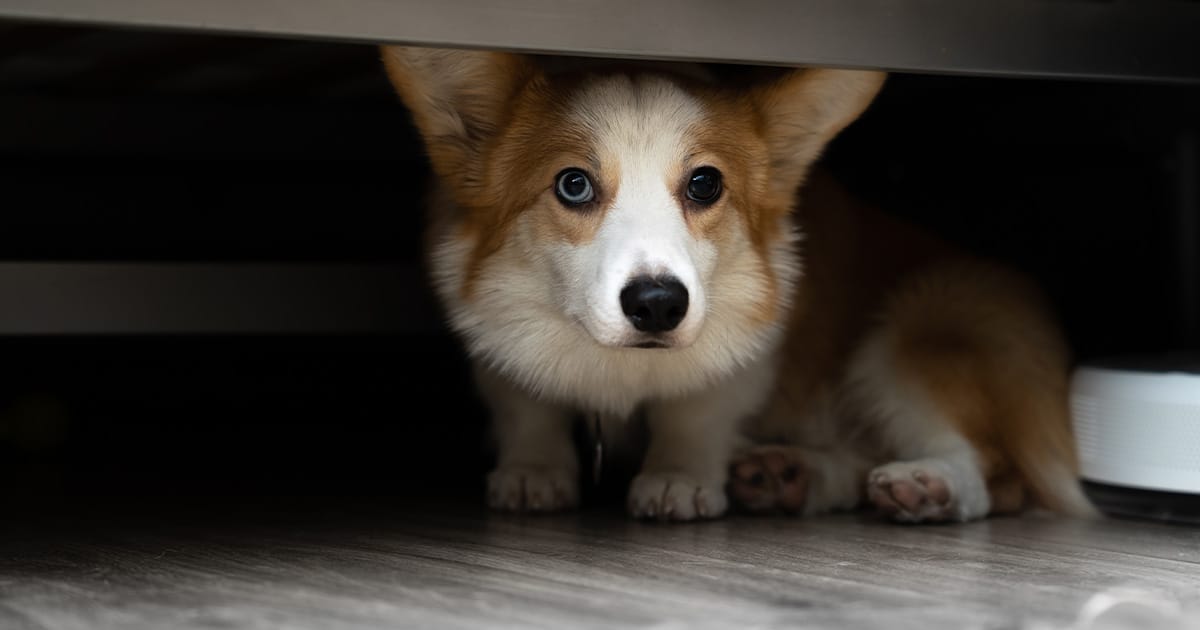Your Pet’s Pregnancy Journey: Tips and Advice for Pet Owners
Caring for a pregnant cat or dog can be overwhelming. Learn more about pet pregnancy, delivery, and newborn care.
Pet pregnancy can be both exciting and overwhelming for pet owners, whether you’re an experienced pet parent or a first timer. Our MedVet specialists have compiled this comprehensive guide to assist you through the stages of your pet’s pregnancy, delivery, newborn care, and considerations for spaying and neutering.
Signs Your Cat or Dog May Be Pregnant
The signs of pregnancy can vary depending on the species, but some common indicators include:
- Dogs: Increased appetite, weight gain, enlarged nipples, and a change in behavior, such as becoming more affectionate or reclusive. Dogs are typically pregnant 58-68 days.
- Cats: Similar to dogs, cats may show increased appetite, weight gain, and enlarged nipples. They may also become more vocal or seek more attention. Cats are pregnant around 63-65 days.
Veterinary Care During Your Pet’s Pregnancy
Regular veterinary check-ups are essential during your pet’s pregnancy. Your family veterinarian can monitor the health of both the mother and the unborn offspring. Here are some key aspects of veterinary care:
- Initial examination: Confirm the pregnancy and estimate the due date.
- Nutritional advice: Your veterinarian may recommend a special diet to ensure your pet gets the necessary nutrients.
- Vaccinations and deworming: Ensure your pet is up-to-date to protect both the mother and the offspring.
- Ultrasound or X-rays: To monitor the development of the fetuses and check for any complications.
While most pet pregnancies are uneventful, it’s important to be aware of signs that may indicate a problem:
- Lethargy or weakness: Unusual fatigue or lack of energy.
- Loss of appetite: A sudden decrease in food intake.
- Vaginal discharge: Any unusual discharge should be checked by a vet.
- Abdominal pain: Signs of discomfort or pain in the abdominal area.
- Fever: An elevated temperature can indicate an infection.
In some cases, your pet may require specialized care. Here are some situations where consulting a veterinary specialist might be necessary:
- High-risk pregnancies: If your pet has a history of complicated pregnancies or health issues, a specialist in veterinary reproduction can provide advanced care.
- Complications during pregnancy: If your pet experiences severe complications, such as dystocia (difficulty giving birth), a veterinary surgeon or emergency care specialist may be needed.
- Postpartum complications: If the mother or newborns show signs of illness or complications after birth, a specialist in internal medicine or critical care can provide specialized treatment.
- Behavioral issues: If your pet exhibits significant behavioral changes during or after pregnancy, a veterinary behaviorist can offer guidance and support.

Knowing When Your Pet is About to Give Birth and Helping
As your pet’s due date approaches, look for these signs:
- Nesting behavior: Your pet may start preparing a comfortable area for giving birth.
- Restlessness: Increased pacing or inability to settle.
- Decreased appetite: A loss of interest in food.
- Drop in body temperature: A slight decrease in temperature can indicate that labor is imminent.
While most pets can give birth without assistance, there are a few things you can do to help:
- Prepare a quiet, comfortable space: A clean, quiet area where your pet feels safe.
- Monitor the birthing process: Keep an eye on your pet but avoid interfering unless necessary.
- Provide warmth: Newborns need warmth, so have towels or blankets ready.
- Contact your veterinarian: If you notice any complications, such as prolonged labor or a lack of progress, contact your veterinarian immediately.
The three stages of birth (whelping) for both dogs and cats are similar and include:
-
- Stage One: Preparation
- Uterine contractions begin, and the cervix dilates (opens).
- Your pet may show signs of restlessness, panting, or nesting behavior.
- This stage typically starts about 12 hours before giving birth.
- Stage Two: Delivery
- Your pet gives birth to their offspring.
- It usually takes up to 30 minutes for each puppy or kitten to be born.
- Intervals of up to two hours between each offspring are considered normal. However, if your pet is experiencing 30-60 minutes of strong contractions without a puppy or kitten being produced, seek veterinary care.
- Stage Three: Afterbirth
- Your pet expels the placenta (afterbirth) immediately after each puppy or kitten is delivered.
- Each offspring is followed by its own placenta.
- Stage One: Preparation

Postpartum Care for Your Pet
After giving birth, your pet will need extra care and attention:
- Nutrition: Ensure your pet has access to high-quality food and plenty of water.
- Monitoring: Keep an eye on the mother and the newborns for any signs of illness or complications.
- Cleanliness: Maintain a clean environment to prevent infections.
- Veterinary check-ups: Schedule a postpartum check-up with your veterinarian to ensure both the mother and the offspring are healthy.
Caring for Newborn Pets
Newborn pets require special care to ensure their health and wellbeing:
- Warmth: Newborns cannot regulate their body temperature, so provide a warm, draft-free environment.
- Feeding: Newborns should nurse frequently. Monitor to ensure all newborns are getting enough milk. If the mother cannot produce enough milk, consult your veterinarian about supplemental feeding.
- Cleanliness: Keep the nesting area clean to prevent infections. Change bedding regularly.
- Handling: Handle newborns gently and minimally to avoid stress and allow them to bond with their mother.
- Health checks: Regularly check for signs of illness, such as lethargy, lack of appetite, or unusual discharge. Contact your veterinarian if you notice any concerns.
- Socialization: Gradually introduce newborns to gentle handling and socialization as they grow to help them become well-adjusted adults.

Spaying and Neutering Pets
Spaying (for females) and neutering (for males) are important procedures that can benefit your pet’s health and behavior. Here’s what you need to know:
- Age: The ideal age for spaying or neutering varies by species:
- Dogs: Typically, between 6 to 9 months, but this can vary based on breed and size
- Cats: Around 5 to 6 months
- After birth: If your pet has had a litter, it’s generally recommended to wait until the offspring are weaned and the mother has fully recovered. This is usually around eight weeks postpartum but consult your veterinarian for personalized advice.
- Benefits: Spaying and neutering can help prevent unwanted litters, reduce the risk of certain diseases (such as mammary tumors and uterine infections in females, and testicular cancer in males), and improve behavior (such as reducing aggression and marking territory).
Remember that each pet has unique needs. If you have any concerns or questions, it’s always best to consult your family veterinarian for personalized advice. If your pregnant or nursing dog requires immediate or specialized care, MedVet is available to help whenever you need us.
Visit our Pet Care Resources library for more pet health and safety information.
FAQs
Contents



